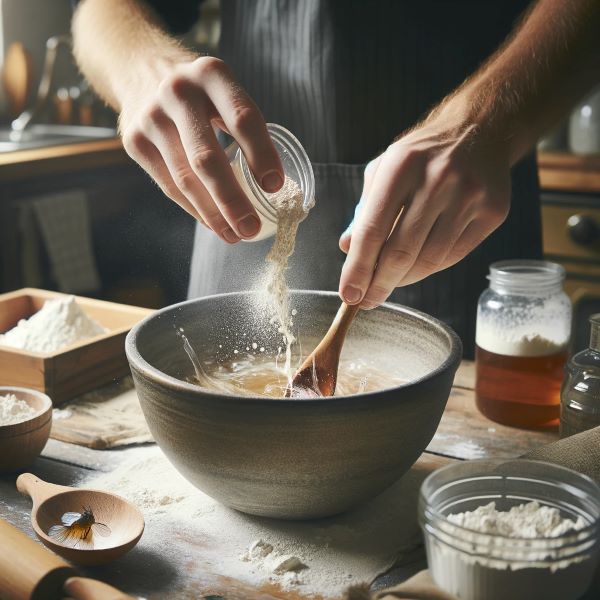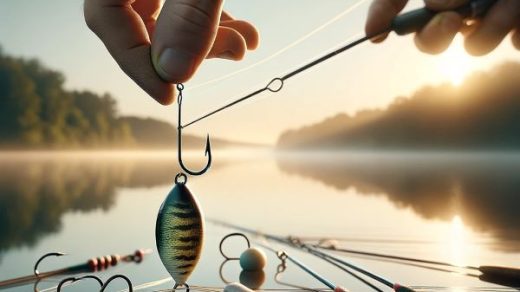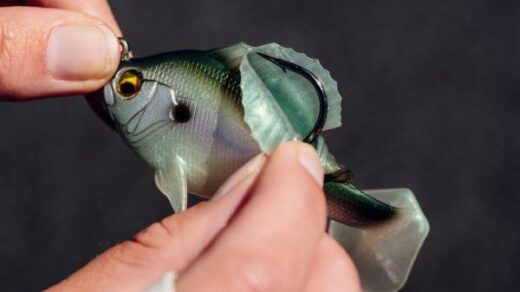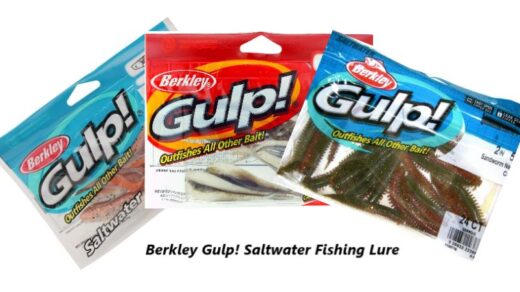A Guide to Homemade Carp Bait Formulations

Angling enthusiasts understand the thrill of the chase when it comes to reeling in a prized catch like carp. However, the key to success lies not just in patience and technique but also in the bait used. While commercial baits are readily available, there’s an art and satisfaction in concocting your own homemade carp bait. Beyond the practicality of cost-effectiveness, crafting your bait allows for customization, tailoring the ingredients to match the preferences and feeding habits of the elusive carp.
In this guide, we delve into the world of homemade carp bait, exploring various formulations, ingredients, and strategies to elevate your angling game. Whether you’re a seasoned angler looking to experiment or a novice eager to learn, crafting your carp bait offers a rewarding journey filled with discovery and anticipation. Join us as we uncover the secrets to creating irresistible baits that will lure even the most cautious carp from their underwater hideaways.
Understanding Carp Feeding Behavior
To craft effective homemade carp bait, it’s essential to gain insight into the feeding behavior of these freshwater giants. Carp are renowned for their omnivorous diet, feeding on a wide array of natural food sources ranging from insects and crustaceans to plant matter and small fish. Their feeding habits can vary significantly depending on factors such as water temperature, time of day, and prevailing environmental conditions.
One key aspect of carp behavior to consider is their propensity for bottom feeding. Carp are often found foraging along the lake or riverbed, using their sensitive barbels to root out food buried in sediment or vegetation. This behavior presents an opportunity for anglers to create bait formulations that mimic the natural food sources found in these habitats.
Furthermore, carp exhibit a selective feeding behavior, preferring certain food items over others based on factors such as taste, texture, and nutritional value. Understanding these preferences can guide anglers in formulating bait recipes that specifically target the taste buds of carp. For example, carp are known to have a sweet tooth, often showing a preference for baits with sugary or fruity flavors. Incorporating ingredients such as molasses, corn syrup, or fruit extracts can enhance the attractiveness of homemade baits to carp.
Temperature also plays a crucial role in carp feeding activity, with these fish becoming more active and voracious feeders during warmer months. As water temperatures rise, carp metabolism increases, leading to greater energy expenditure and the need for frequent feeding. Anglers can capitalize on this by adjusting their bait formulations to cater to the heightened appetite of carp during peak feeding periods.
Additionally, carp are highly adaptable creatures capable of quickly learning and recognizing potential food sources. This adaptability means that carp may exhibit caution or skepticism towards unfamiliar or suspicious-looking baits. To overcome this challenge, anglers can employ tactics such as pre-baiting, where small quantities of bait are introduced to the fishing area over a period of time. This technique helps acclimate carp to the presence of the bait, increasing the likelihood of a successful hook-up when the main bait is presented.
Essential Ingredients for Homemade Carp Bait
Crafting homemade carp bait requires careful selection of ingredients to create formulations that appeal to the sensory preferences of these discerning fish. Whether you’re aiming for a dough-based bait, a particle mix, or a boilie recipe, incorporating the right ingredients is essential for success. Below is a comprehensive list of essential ingredients commonly used in homemade carp bait, along with their respective functions and potential variations:
| Ingredient | Function | Potential Variations |
| 1. Base Mix | Provides structure and | Flour (e.g., wheat, maize, rice), breadcrumbs, ground oats, |
| consistency to the bait. | semolina, crushed biscuits. | |
| 2. Protein | Attracts carp with its | Fishmeal, soy flour, whey protein, crushed hemp seeds, |
| scent and nutritional value. | blood powder, shrimp meal. | |
| 3. Sweetener | Enhances taste and | Molasses, corn syrup, honey, maple syrup, condensed milk, |
| palatability of the bait. | fruit extracts (e.g., strawberry, pineapple). | |
| 4. Binder | Binds ingredients together | Eggs, gelatin, vegetable oil, peanut butter, mashed potatoes. |
| and provides adhesive | ||
| properties. | ||
| 5. Flavors | Adds scent and taste | Essential oils (e.g., garlic, aniseed, vanilla), food-grade |
| appeal to the bait. | flavorings (e.g., tutti-frutti, banana, chocolate). | |
| 6. Attractants | Increases the bait’s | Liquid additives (e.g., amino acids, betaine, squid extract), |
| attractiveness to carp. | powdered spices (e.g., chili powder, turmeric), fruit juice. | |
| 7. Texture | Influences bait’s | Ground seeds (e.g., sesame, sunflower), crushed nuts (e.g., |
| consistency and mouthfeel. | tiger nuts, peanuts), coarse grits. | |
| 8. Colorants | Adds visual appeal and | Food coloring (e.g., red, yellow, green), powdered dyes, |
| enhances visibility. | natural pigments (e.g., paprika, spirulina). | |
| 9. Preservatives | Extends bait’s shelf life | Salt, citric acid, sodium benzoate, potassium sorbate. |
| and prevents spoilage. |
Crafting Dough-Based Carp Baits
Dough-based baits are a popular choice among anglers for their simplicity, versatility, and effectiveness in attracting carp. These baits can be easily molded into various shapes, sizes, and textures, allowing anglers to experiment with different presentations to entice carp. Below, we outline a step-by-step guide for crafting dough-based carp baits, along with a list of essential ingredients and optional additives to enhance their appeal:
Step 1: Prepare the Base Mix
The base mix serves as the foundation of the dough bait, providing structure and consistency. Choose a combination of flours such as wheat, maize, or rice flour, along with breadcrumbs or ground oats to create the desired texture. Mix the dry ingredients thoroughly in a large bowl, ensuring even distribution.
Step 2: Add Protein and Sweetener
Next, incorporate protein-rich ingredients such as fishmeal, soy flour, or whey protein to add nutritional value and attract carp with their scent. Additionally, add a sweetener such as molasses, corn syrup, or honey to enhance the bait’s palatability and increase its attractiveness to carp. Mix these ingredients into the base mix until well combined.
Step 3: Bind the Ingredients
To bind the ingredients together and provide adhesive properties to the bait, add a binder such as beaten eggs, gelatin, or vegetable oil. This helps hold the bait together during casting and retrieval, ensuring it stays intact on the hook. Mix the binder into the dough mixture until it reaches a pliable consistency that can be easily molded.
Step 4: Enhance Flavor and Attractiveness
Incorporate flavorings and attractants to further enhance the bait’s appeal to carp. Add essential oils such as garlic or aniseed, food-grade flavorings like tutti-frutti or banana, and liquid attractants such as amino acids or squid extract. These additives infuse the bait with enticing scents and tastes that can trigger feeding responses in carp.
Step 5: Adjust Texture and Color
Fine-tune the texture of the dough bait by adding texture-enhancing ingredients such as ground seeds, crushed nuts, or coarse grits. These additions not only add visual interest but also provide a unique mouthfeel that can entice carp to feed. Additionally, incorporate colorants such as food coloring or natural pigments to enhance the bait’s visibility underwater.
Step 6: Form and Cure the Bait
Once the dough mixture is thoroughly combined and flavored to your liking, it’s time to form it into bait shapes. Roll the dough into small balls, cylinders, or cubes, and place them on a baking tray lined with parchment paper. Allow the bait to cure and firm up for several hours or overnight before using it on the water.
Essential Ingredients and Optional Additives:
| Ingredient | Function |
| Base Mix | Provides structure and consistency. |
| Protein | Attracts carp with scent and nutrition. |
| Sweetener | Enhances taste and palatability. |
| Binder | Binds ingredients together and provides adhesive properties. |
| Flavorings | Adds scent and taste appeal. |
| Attractants | Increases bait’s attractiveness to carp. |
| Texture Enhancers | Influences bait’s consistency and mouthfeel. |
| Colorants | Adds visual appeal and enhances visibility. |
Creating Particle Mix Carp Baits
Particle mix baits are a versatile option for targeting carp, offering a blend of attractants and textures that can entice these fish in various aquatic environments. This section will outline the process of creating particle mix carp baits, along with a list of essential ingredients and optional additives to enhance their effectiveness:
Step 1: Select Particle Ingredients
Particle baits typically consist of a mixture of seeds, grains, and pulses that release attractants and nutrients into the water, drawing carp to the fishing area. Common particle ingredients include:
- Maize: Whole or cracked maize kernels provide visual appeal and a sweet taste that carp find irresistible.
- Hemp Seeds: Rich in oils and amino acids, hemp seeds release attractants as they soak, creating a scent trail that leads carp to the bait.
- Tiger Nuts: These hard, dense nuts are a favorite among carp and offer long-lasting durability on the hook.
- Chickpeas: High in protein and carbohydrates, chickpeas provide a nutritious and attractive bait option.
- Beans: Varieties such as kidney beans or black beans add texture and flavor diversity to the particle mix.
Step 2: Prepare and Cook the Particles
Before using them as bait, prepare the particle ingredients by soaking or cooking them to soften and release their natural attractants. Depending on the type of particle, this may involve:
- Soaking: Place the particles in a bucket or container filled with water and allow them to soak for 12-24 hours, or until they become soft and pliable.
- Boiling: For harder particles like maize or tiger nuts, boil them in water for 30-60 minutes until they reach the desired consistency. Adding flavors or attractants to the boiling water can enhance the bait’s effectiveness.
Step 3: Flavor and Enhance the Particles
Once the particles are prepared, enhance their attractiveness to carp by adding flavorings and attractants. This can be achieved by:
- Marinating: Soak the cooked particles in a liquid bait additive or flavored syrup for several hours or overnight to infuse them with scent and taste.
- Coating: Dust the particles with powdered flavorings or attractants such as powdered spices, amino acid powders, or powdered sweeteners to create a flavorful coating.
Step 4: Mix and Store the Particle Blend
Combine the flavored particles into a mix that offers a variety of textures, colors, and tastes to appeal to carp. Store the particle blend in an airtight container or bag until ready to use, ensuring it remains fresh and potent on the bank.
Essential Particle Ingredients and Optional Additives:
| Particle Ingredient | Function |
| Maize | Provides visual appeal and sweetness. |
| Hemp Seeds | Releases attractants and oils into water. |
| Tiger Nuts | Durable and attractive bait option. |
| Chickpeas | High-protein and carbohydrate source. |
| Beans | Adds texture and flavor diversity. |
Conclusion:
In the art of carp angling, the bait you choose can make all the difference between a successful day on the water and a disappointing outing. While commercial baits abound, the satisfaction and effectiveness of crafting your own homemade carp bait cannot be overstated. Throughout this guide, we’ve explored the intricacies of creating homemade carp baits, from dough-based concoctions to particle mixes and boilie recipes.
Crafting homemade carp bait is not just about saving money or customizing your approach; it’s a journey of discovery and creativity. It’s about understanding the nuances of carp behavior, experimenting with ingredients and formulations, and honing your skills as an angler. Whether you’re a seasoned veteran or a novice enthusiast, there’s something inherently rewarding about presenting a bait that you’ve crafted with your own hands, knowing that it holds the potential to lure in a prized catch.
As you embark on your own carp bait-making adventures, remember to embrace experimentation and innovation. Don’t be afraid to try new ingredients, flavors, and techniques. Keep detailed records of your successes and failures, and use them to refine your approach over time. And most importantly, cherish the moments spent on the water, whether you’re reeling in a trophy carp or simply enjoying the serenity of nature.
So, gather your ingredients, roll up your sleeves, and get ready to craft baits that will tempt even the most elusive carp. With patience, perseverance, and a dash of creativity, you’ll soon find yourself reaping the rewards of your homemade carp bait




